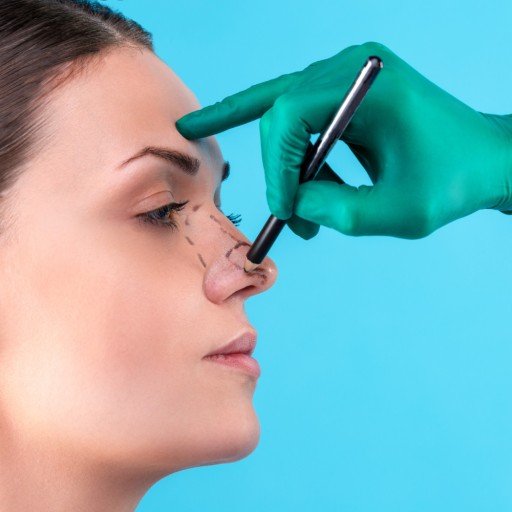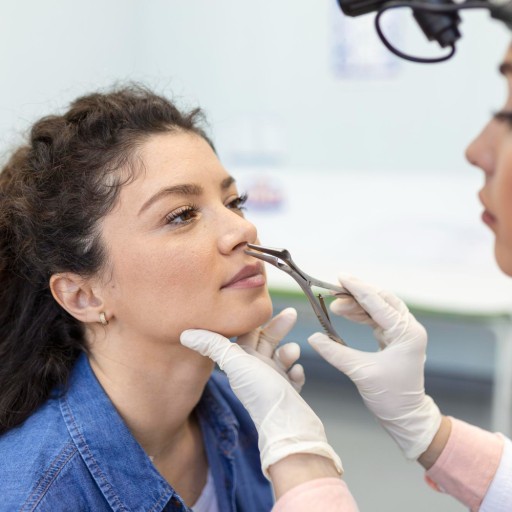Revision Rhinoplasty
3 results foundRevision Rhinoplasty: A Guide to Enhancing Your Nose and Restoring Confidence
Revision rhinoplasty, also referred to as secondary rhinoplasty, is a surgical operation intended to correct or finesse the result of a prior nose surgery. Unsatisfactory results, functional issues, or complications arising from the initial procedure are common indications for revision rhinoplasty, which affords patients a second chance to enhance the appearance and functionality of their nose. This article examines reasons for undergoing revision rhinoplasty, what the procedure entails, and recovery, and the benefits awaiting one who seeks expert care to achieve the best outcome.
What is Revision Rhinoplasty?
Revision rhinoplasty is a surgical procedure designed to address issues resulting from a previous rhinoplasty. While primary rhinoplasty reshapes the nose to change its shape for aesthetic or functional reasons, revision rhinoplasty corrects or improves an initial outcome. It includes both aesthetic and functional corrections, including breathability problems because of nasal obstruction, asymmetry, or any undesired cosmetic result from the first surgery.
Revision rhinoplasty is usually more complicated than primary rhinoplasty, as the nasal structure may have been altered during the initial surgery, affecting the surgeon's ability to reshape the nose. It may require additional grafts or tissue from other areas of the body, such as cartilage from the ear or rib, to achieve the desired results.
Reasons for Considering Revision Rhinoplasty
There are various motives that lead a person to opt for revision rhinoplasty. In broad aspects, these reasons may be segregated into aesthetic grievances and functional issues.
Aesthetic Concerns: The primary rhinoplasty results in unsatisfactory performance on the part of the patient due to which the expectations associated with the outcome remain unfulfilled. The common complaints are the too small or too big nose, nose not being straight or symmetrical, and it might also look disproportionate among the other facial features.
Functional Issues: Revision rhinoplasty will correct any breathing problems caused by nasal obstruction, a deviated septum, or nostrils that have collapsed. Difficulty in breathing through the nose after surgery is very common for many patients, and this requires revision rhinoplasty to regain normal breathing function.
Scarring or Deformities: Sometimes, scarring or deformities such as a visible bump or irregularities may form after the initial surgery. These imperfections can be corrected with revision rhinoplasty to improve both appearance and function.
Trauma or Injury: Sometimes, a patient may experience injury or trauma to the nose after the initial rhinoplasty, leading to deformities that require revision surgery to repair.
The Importance of Choosing the Right Surgeon
Revision rhinoplasty is a very delicate and complex procedure; thus, picking a highly experienced and skilled surgeon is very important for satisfactory results. Because the structure of the nose may have been altered in the first surgery, advanced surgical techniques and an intimate knowledge of nasal anatomy are required in a revision procedure. A board-certified plastic surgeon who specializes in revision rhinoplasty will be aware of how to assess an existing nasal structure, recognize your goals, and use appropriate techniques to restore form and function.
During the consultation, the surgeon will determine the extent of changes to be made and how best to go about achieving the results desired. It is very important to have realistic expectations and discuss with your surgeon what you want to achieve.
What to Expect During the Revision Rhinoplasty Procedure
Revision rhinoplasty is often carried out under general anesthesia, although, in some cases, local anesthesia can be performed. The length of the procedure can vary from a few hours depending on the complexity of the surgery and the extent of the corrections to be done. The steps usually include:
Incisions: The surgeon will make precise incisions, often within the nostrils (closed rhinoplasty) or along the columella (the area between the nostrils, for an open rhinoplasty). These incisions allow the surgeon to access the nasal structure and work on reshaping the cartilage, bone, and tissue.
Rhinoplasty Procedure: The surgeon reshapes the nose by removing or adding tissue to correct imperfections or to give the nasal framework structural support. The grafts which support the nasal framework may be made of cartilage taken from the patient's ear, rib, or from an artificial material.
Correcting Breathing Issues: If there is any breathing problem, the surgeon may correct the septum, widen the nasal passages, or do other manifold techniques to enhance airflow inside and functionality.
Closing the Incisions: After the desired changes are affected, the surgeon will carefully close the incisions and may apply a splint or dressing to protect the nose during the initial stages of healing.
Recovery and Healing After Revision Rhinoplasty
Recovery from revision rhinoplasty may take some time, and patients should be prepared for a period of rest and limited activity. Recovery is usually longer and more complicated compared to the initial rhinoplasty because revision surgery involves more work. Here's what you can expect:
Swelling and Bruising: Swelling and bruising are normal after revision rhinoplasty. Most of the swelling occurs in the nose and eye area, and it usually dissipates after two to three weeks, though mild swelling could be continued for several months.
Pain and Discomfort: A small amount of pain and discomfort are expected after this surgical procedure; this can be taken care of by using pain medicines as prescribed by your doctor. Avoid pressing on the nose in the initial recovery period.
Postoperative Care: The surgeon will give postoperative instructions to be followed for correct healing. This includes keeping the head elevated, avoiding strenuous activities, and taking care of the surgical site to prevent infections.
Follow-Up Appointments: Patients will be required to attend follow-up appointments to ensure proper healing and monitor progress. The final results of revision rhinoplasty can take up to 12 months to fully materialize, as the nose continues to heal and settle into its new shape.
Possible Risks and Complications
As with any other surgical procedure, there is some risk associated with revision rhinoplasty. Though generally safe in skilled hands, possible complications could include:
Infection: As with all surgeries, a very small percentage of individuals develop an infection in the postoperative period. When this happens, further interventions or antibiotics may be necessary.
Scarring: Scarring is a part of healing. However, for some individuals, scars may be more noticeable or take longer to fade.
Unfavorable Outcomes: In complicated situations, the intended result may not be achieved, and additional revision surgeries might be required. Realistic expectations must be made, and one should not expect the result to be exactly as one had anticipated.
Breathing Problems: Complications arising during revision rhinoplasty may lead to continued or new breathing problems in some patients. If this happens, additional surgery will be needed to correct the problem.
Revision Rhinoplasty Costs
The cost of revision rhinoplasty can vary depending on several factors, including the complexity of the surgery, the surgeon’s expertise, and the geographic location of the procedure. On average, revision rhinoplasty can cost anywhere from $7,000 to $15,000 or more. Insurance coverage may not always apply, as the procedure is often considered cosmetic. It is essential to discuss costs upfront with your surgeon and plan accordingly for any financial considerations.
Is Revision Rhinoplasty Right for You?
Revision rhinoplasty is a great option for anyone looking to revise previous rhinoplasty outcomes, be it for aesthetic or functional reasons. However, the timing and the motives for seeking revision surgery have to be carefully considered. Patients should be in good overall health, have realistic expectations, and understand the challenges involved in the process.
If you are considering revision rhinoplasty, consultation with a proficient and experienced surgeon is highly important for an optimal result. A good consultation helps you understand options, have realistic expectations, and design a plan specific to address your concerns.
Conclusion
Revision rhinoplasty presents a good opportunity for those who are less than satisfied with their first nose surgery. Whether the goal is to improve the nose’s appearance, correct functional problems, or fix any complications, revision rhinoplasty can help restore both aesthetic balance and breathing functionality. If you’re considering this procedure, choose a qualified, experienced surgeon, and take the time to discuss your goals, expectations, and the recovery process to ensure the best possible results for your unique needs.



